Not a runner? Here's how you can start—and not get injured
Motivated to go for a run? Please, read this first.
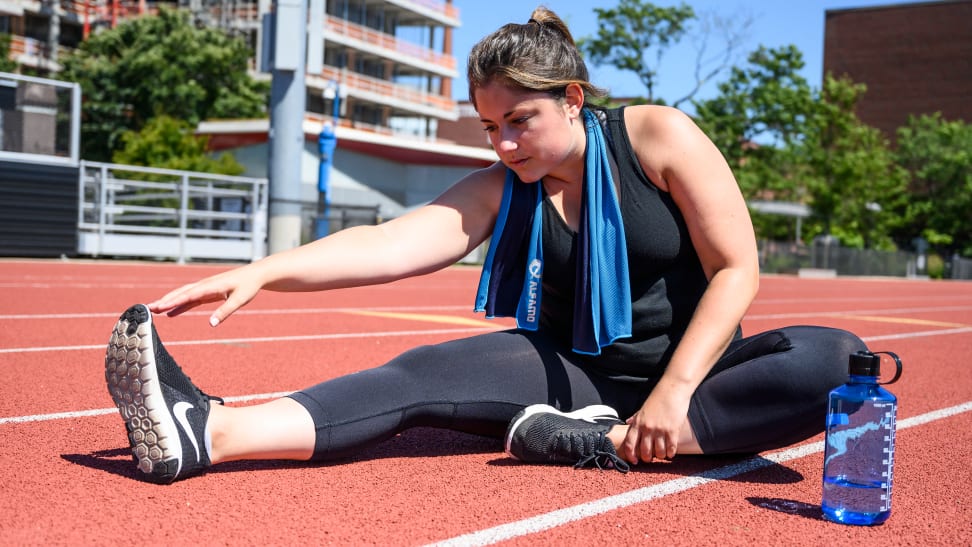 Credit:
Reviewed / Betsey Goldwasser
Credit:
Reviewed / Betsey Goldwasser
Products are chosen independently by our editors. Purchases made through our links may earn us a commission.
Having been a runner for about eight years now, it makes my heart happy to see friends on social media take up the hobby—after all, it’s an effective way to get some much-needed exercise. But as a running coach, a part of me gets nervous, worried that those same friends will take on too many miles, too quickly for their bodies to acclimate—and even become injured.
The thing about starting any new fitness routine is that the acclimation process is twofold: First, your cardiorespiratory organs (e.g., lungs and heart) and body tissues (muscles, tendons, ligaments, and bones) need time to build up a baseline. And second, it can take a day or two for those tissues especially to catch up to the new stimulus (i.e., workout routine) that you’re exposing them to. That’s why you might be able to go out and run for a few minutes or even a few miles and when you finish, feel pretty good… then, within 24 to 48 hours, feel so stiff and sore you can hardly walk, let alone stay motivated to run again.
And so, here’s everything I wish I could write in a comment on Facebook about safely starting a running routine—in article form, so all I need to do going forward is share a link.
How to choose running shoes
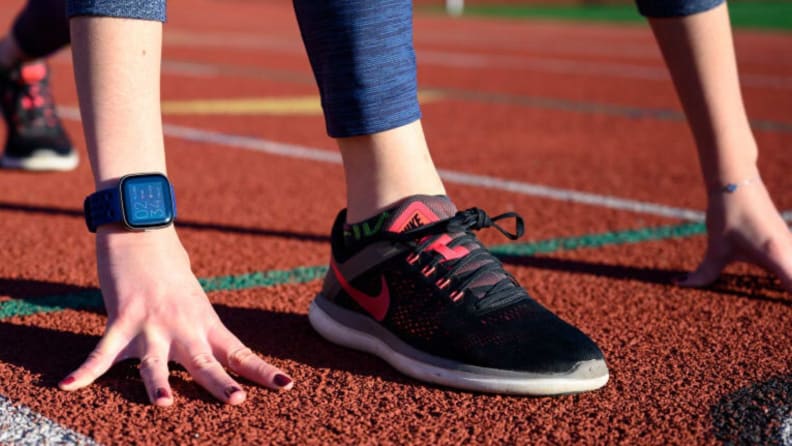
Finding running shoes that feel great is your top priority.
Running fans love to say about their fave pastime: “It’s such great exercise—all you need is a good pair of running shoes!” And while that’s true in theory, the shoe thing is a little more nuanced than that.
Most people have at least one pair of athletic shoes in their closet, and in a pinch, these may be fine to wear, at least when you’re first starting out. What you should understand, though, is that running shoes are designed specifically for that activity, with a sole shape and upper structure that support the force of those repetitive foot falls and forward propulsion that make up the mechanics of proper running form. Cross-training shoes, on the other hand, are designed to offer support laterally in addition to front-to-back, for when workouts include changes of direction. This attribute won’t likely get in the way of running, but for some people, cross-trainers won’t be supportive or comfortable enough when it comes to pounding the pavement long-term.
The best way to determine if your current athletic shoes will work when you go out for a run: Jog around in them. If you feel any pinching or rubbing during movement, or soreness in your feet after, those are signs you may need to change them out. Over time, If you wear shoes that aren’t completely comfortable, your body may make adjustments to avoid exacerbating those hot spots, leading to detrimental changes in your gait pattern and the possibility of injury.
Shopping for new shoes is best done in a running store, where the trained staff can put you on a treadmill and you can feel out potential new shoes before you buy. In lieu of that, shop at an online retailer with a really good return policy, such as Zappos, which offers free shipping and returns on unworn shoes, or Road Runner Sports or REI, which both allow returns of lightly used gear. Many brands offer similar trial periods, too, including Nike and Brooks Running.
The most important attribute in assessing your new running kicks: They must be completely comfortable. You should feel nothing from your feet but support, and protection from the ground beneath them.
Running shoes for beginners to consider
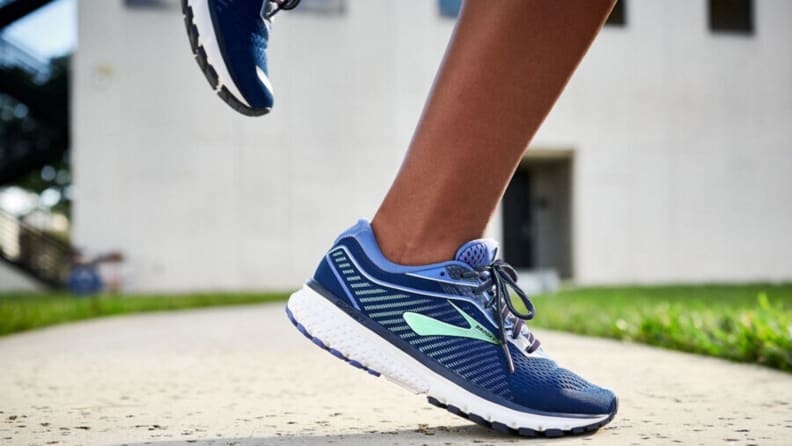
The Brooks Ghosts are a very popular running shoe for a good reason: They're very comfortable.
If you’ve never worn proper running shoes before, your best bet is to start with a “neutral” style with middle-of-the-road cushioning. Popular models that work for a lot of people include Brooks Ghost (for average-width feet), Nike Pegasus (for narrower feet), and New Balance Fresh Foam 1080 (for wider feet).Shop at Brooks Running Shop at Nike Shop at New Balance
If you know you have flat feet or fallen arches, a “stability” shoe—which keeps your inner foot from collapsing inward as you land—may appeal. Ones that some runners swear by: Brooks Adrenaline GTS (average-width fit), Mizuno Wave Inspire (narrower fit) and Asics Gel Kayano (wider fit).Shop at Brooks Shop at Mizuno Shop at Asics
Finally, if you’re interested in the idea of a shoe designed for more “natural” movement, the brand Altra—and in particular, my personal favorite shoe, the Escalante—touts a “foot-shaped” upper and a flat, supportive sole. (Note: If you’re used to a traditional running shoe that has a thicker heel, you may need to transition to these shoes slowly.) Shop at Altra
How to choose running clothing
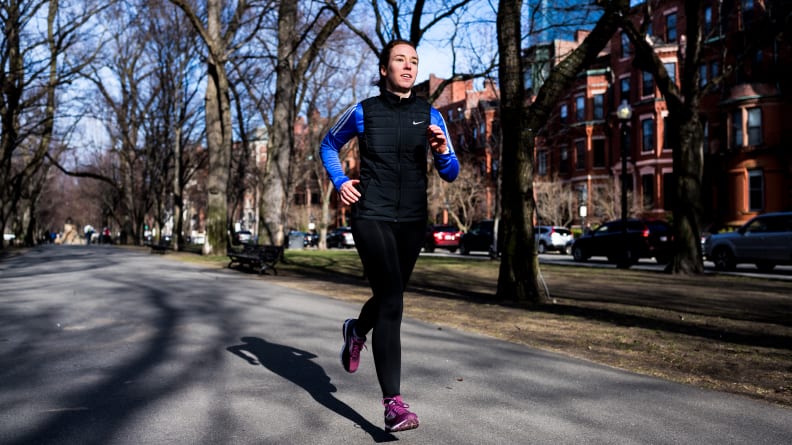
Wearing clothing made of synthetic materials, like Nike Dri-Fit, keeps your body cool and comfortable.
Solo running is hardly a fashion contest, and you don’t have to outfit yourself in head-to-toe Lululemon (unless, of course, you want to). But one cardinal rule of running clothes must be followed: Do not wear cotton anything. This natural fiber absorbs—rather than helps dissipate—your sweat as you exercise, which will make your skin feel soggy, cold, or even chafed and raw.
Opt for tops and bottoms made of synthetic performance materials—such as Nike Dri-Fit or Under Armour HeatGear—or natural wool fabric, like Smartwool that are sweat-wicking, which siphon moisture off your skin and allow it to evaporate quickly. The same advice goes for your socks as well.
To anyone with breasts, I cannot stress this enough: You will be most comfortable with a high-impact sports bra. I personally prefer ones with hooks in back rather than the ones you pull over your head—they are easier to put on and especially to take off, and they tend to offer more support around the lower band, which is the part of the bra that’s supposed to do the most work. One place where it’s worth spending the athleisure bucks is to get the Lululemon Energy bra, which won the top spot on our test of the best sports bras for being extra-supportive, sweat-wicking, and fashionable. For those looking to stock up, the Syrokan Shock Control earned our Best Value accolades for its often discounted price on Amazon, and it comes in an even broader size range than the Lulu.Shop at Lululemon Shop at Amazon
Pro tip: While those synthetic performance fabrics are great for comfort, they tend to hold in bacteria over time, making for a very smelly situation. The easy fix: On the way to the shower post-workout, toss those soggy clothes into the sink and rinse them well, allowing them to hang dry before putting in the laundry.
How to start running
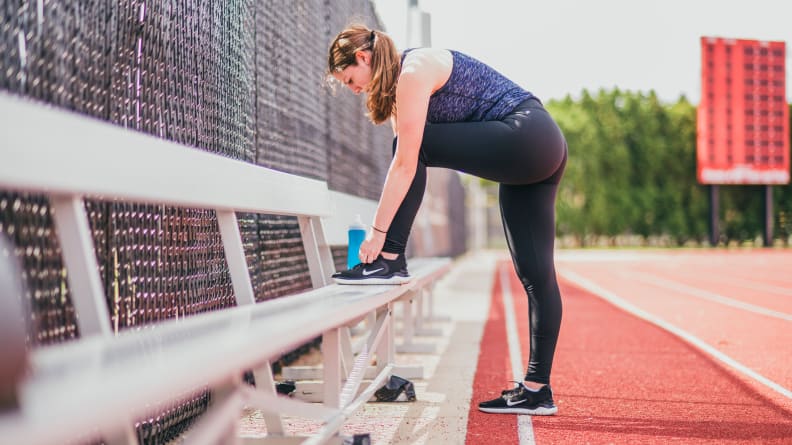
Dressing the part for a run is only the first half of instituting your grand plan to become a runner.
OK, you’re fully dressed and ready to head out the door. Not so fast! Remember how I began this article with the whole “you have to acclimate” thing? Yeah, you gotta do that.
The best way to get your body used to running is to do it in a smart and measured way, by breaking up bouts of running with bouts of walking in a single session. At first, that’s going to mean a lot more walking than running, and that’s completely fine. It’s great, in fact, because overall you will reap far greater body benefits from a half-hour session in which you run a total of only five minutes, than you would from going out hot, running for five minutes, gassing out, and shuffling home.
Before every run, begin with some dynamic stretching—this could be as simple as three rounds of about 30 seconds each of marching in place, jumping jacks, high-knee stationary jogs, and butt-kick stationary jogs.
Lesson 1: Try fartleks
My favorite beginner run-walk technique is to use fartleks. (Go ahead, giggle now.) This Swedish word means “speed play” and that’s all you do: play with adding some speed (in this case, running) between bouts of less-intense movement (in this case, walking). After about a five-minute walking warmup, eyeball a spot up ahead but not all too far in front of you—say, a neighbor’s mailbox, a particular tree, or the next telephone pole—and pick up your pace until you arrive there. Then, walk until your heart rate decreases and you’re breathing normally, and pick a new spot to run to. Keep it up until you’ve exercised for 20 to 30 minutes, including one last five-minute cooldown walk. Doesn’t that sound fun?
Lesson 2: Graduate to walk-runs
Once you’ve done a few fartlek-style walk-runs and your body is recovering well and feeling ready for the next challenge, you can be more structured with your sessions, using a timer like the one built into many fitness trackers, including our favorite, the Fitbit Charge 5, or a free timer app on your phone.
At first, your walk bouts should be longer than your run bouts, but trust me: Even if it feels easy at the start of the workout, it will get harder as you progress and you aren’t able to fully recover on your walk before your next run. You can choose your own timing scheme, but a good beginning workout consists of a five-minute walking warmup, then eight reps of 30 seconds of running and two minutes of walking, then a five-minute cooldown. As you progress, your workouts will become more running with less walking recovery, but it’s important that you only change one variable at a time (so maybe next you'd try one minute of running and two minutes of walking). Keep with one workout until you get used to it, and take rest or walking-only days as needed to feel recovered to do it again.
Lesson 3: Start running (or not)
Eventually, your walk-to-run ratio will flip, with more running and less walking. You may “graduate” to running continuously—or you may find that a run-walk scheme is ideal for you, long-term. In fact, famed coach Jeff Galloway created an entire training method that has helped many people achieve faster race times with reduced risk of injury by taking walking breaks. This is where the old adage “listen to your body” really comes into play—by now, you should be aware of what feels good to your body and what maybe doesn’t (or won’t, in the days after a workout).
Whether you transition to full running or continue the run-walk routine with a greater ratio of running (i.e., impact on your body), you should keep the "10% rule" in mind—to safely increase your mileage, bump up your week's total by no more than 10% at a time. (So if you get to 10 miles of running over the course of one week, you shouldn't exceed 11 the next week.) If you opt to add in more days of running, start by doing that rather than going longer distances in any one session. Then gradually increase the length of your long runs, then the shorter ones.
For a more structured running plan, the popular (free!) C25K app takes you from the couch to run-walking or running a 5K over eight weeks of training.
Extra credit: Great running apps, GPS watches, and other accessories
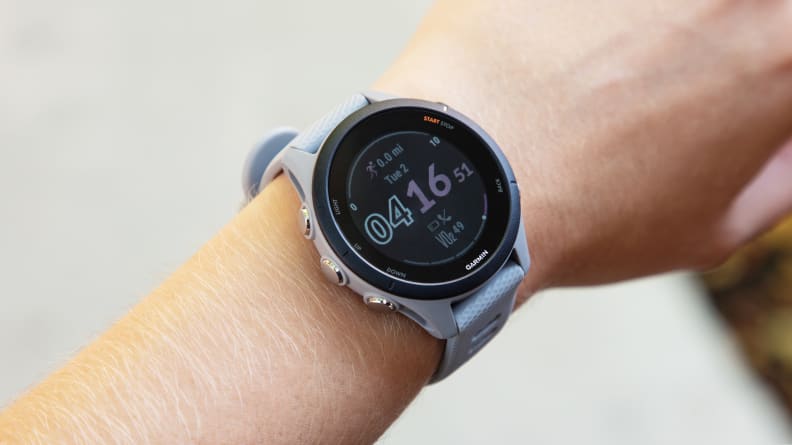
We selected the Garmin Forerunner 255 as our best overall running watch.
This is the part where I go full-on runner geek. First off: As soon as you commit to regular run-walk sessions, you are officially a “runner” (not, and never, a "jogger")—congrats! Now here’s the next-level stuff you’ll want to own ASAP.
A running-specific social media app
Strava is the running app for storing and (more importantly!) sharing your runs with other runner friends. It combines the social media aspect of garnering “kudos” from your fellow athletes for a run well done, as well as a great way to track your progress as you go longer and get faster. You can use Strava directly from your phone to track a run as you do it, and the app also can be set to import workouts from Garmin, Fitbit, and other devices.Download Strava
A stay-put waist belt
Chances are, you’ve been bringing your phone along with you during your workouts, either for its workout-tracking capabilities or for in-case-of-emergency safety. A lot of activewear lacks pockets, so to free up your hands, get a Spibelt pouch, which straps your phone—as well as a key and maybe some cash—around your waist. (Skip those armbands, which could throw off your arm swing, thanks to the uneven weight of a heavy extra-large phone strapped to one side, and could affect your gait. I personally also find Spibelt's companion clip-on water bottle to be convenient and bounce-free, and as your efforts increase, you may want to bring hydration with you. Shop at Amazon
A GPS watch
Eventually, most runners get sick of carrying their phones all the time, or they begin to derive an extra runner high from seeing at a glance the distance they’ve run or the average pace they’ve held. When you become that person, you will want a GPS watch.
Our favorite running watch, the Garmin Forerunner 255, provides all that real-time data feedback, including your pulse (though if you want to train by heart rate, we recommend chest-strap heart rate monitors for better accuracy.) The 255 also allows you to program your workouts and follow them with prompts from your wrist, as well as access free race training programs, for when you decide to tackle, say, your first half-marathon.Shop at REI
A pair of cool sunglasses
Any sports sunglasses will do the job of keeping you from squinting during daylight runs. Goodr sunglasses are much-beloved by runners for staying put on sweat-slippery noses and ears. They also look slick, in styles like “Flamingos on a Booze Cruise” (pink frames with green-tinted polarized lenses).Shop at REI
A foam roller
The only other thing runners talk about incessantly, apart from how far they ran today? How sore they felt after. A good foam roller, like our fave, the LuxFix Premium High-Density Foam Roller, eases out those tight hammies in a “hurts so good” kind of way.Shop at Amazon
Anti-chafing gel
BodyGlide, a type of lubricating balm is priceless for eliminating painful chafing in hot spots on your skin as your miles increase, and therefore more friction builds. (Fact: I’ve gotten chafed during half-marathons wearing the same clothes that never posed a problem during shorter workouts.)
Apply it liberally before you run in any place where clothing or skin meets (more) skin, such as under the arms, between the thighs, beneath a bra or heart-rate strap, on the feet and ankles, and over the nipples. (Yes, really. And, no, don’t Google that.) Shop at REI
